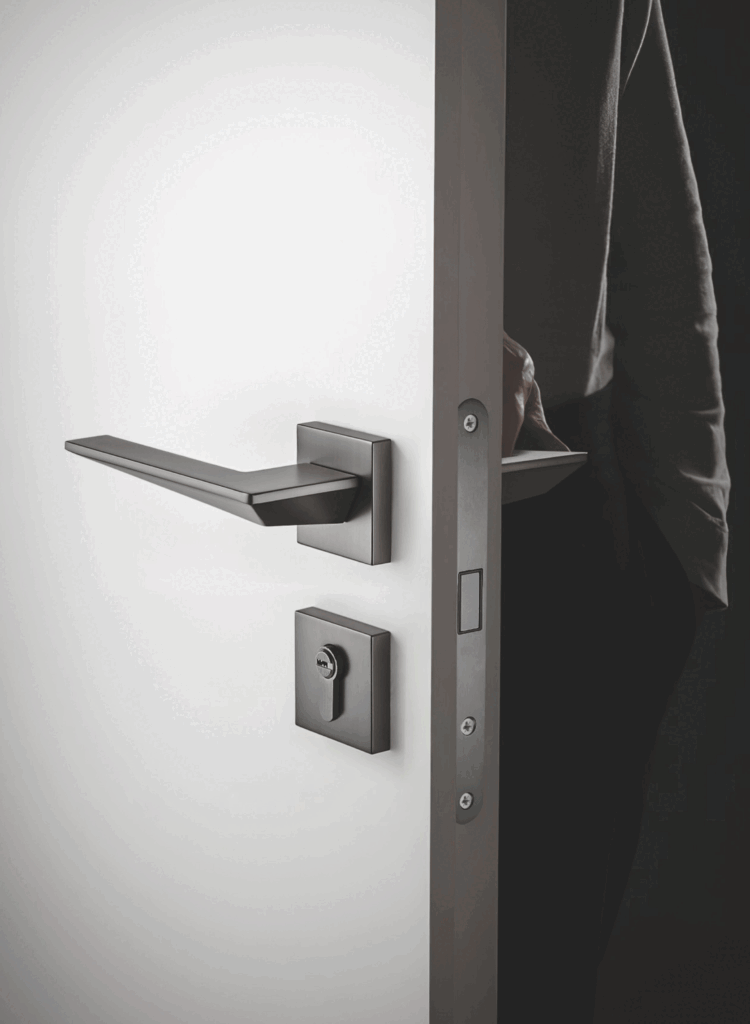🔧 What Is Polishing?
Polishing is a surface-finishing process used to smooth, clean, and refine metal parts by removing minor surface imperfections, oxidation, and burrs. In the hardware industry—especially in the manufacturing of concealed hinges—polishing is essential not just for aesthetics but for functional integrity. A well-polished hinge allows for smoother movement, better plating adhesion, and longer product lifespan. It also prevents corrosion and gives hardware a professional, high-end appearance.
🛠️ Types of Polishing in Hardware Manufacturing
There are several common polishing methods used in the door hardware industry:
- Manual Polishing: Carried out by skilled workers using polishing wheels or belts. It is labor-intensive but suitable for achieving mirror finishes on visible parts.
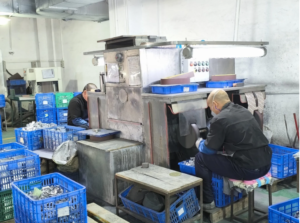
- Vibratory Polishing (Vibratory Finishing): An automated mass-finishing process that uses vibration, abrasive media, and compounds to polish parts in bulk.
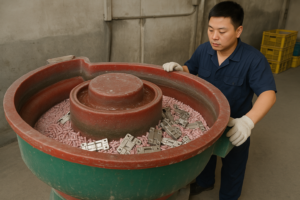
- Mechanical Buffing: Uses rotating cloth or fiber wheels charged with abrasive paste. Often used for decorative finishes.
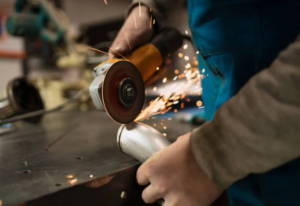
- Electropolishing: A chemical process that uses electrical current to smooth and brighten metal surfaces.
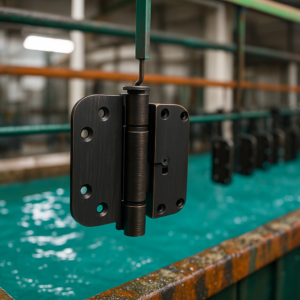
- Tumbling: Similar to vibratory polishing but uses rotating barrels. It is more aggressive and suitable for deburring.
Each method serves different stages of the production process. For concealed hinges—where consistent internal surface treatment matters—vibratory polishing is particularly effective.
⚙️ Vibratory vs. Manual Polishing: What’s the Difference?
Aspect | Manual Polishing | Vibratory Polishing |
Labor | High | Low (automated) |
Consistency | Varies by operator | Uniform and repeatable |
Speed | Slower, piece-by-piece | Fast, batch processing |
Surface Finish | Very smooth (with skill) | Smooth and functional |
Cost | Higher per unit | Lower in mass production |
Manual polishing is better suited for decorative parts that require visual perfection. However, in industrial components like concealed hinges, vibratory polishing offers superior efficiency, repeatability, and cost-effectiveness, making it the preferred method for internal mechanisms or hidden components.
✅ Advantages of Vibratory Polishing for Concealed Hinges
- Batch Efficiency: Processes hundreds of parts simultaneously, reducing labor and production time.
- Surface Uniformity: Ensures consistent surface texture across all hinge components—critical for stable plating and long-term durability.
- Improved Adhesion: Prepares metal surfaces for electroplating, resulting in stronger and longer-lasting finishes.
- Deburring & Cleaning: Removes sharp edges and machining residues without damaging the structure.
- Cost Control: Optimizes production cost, especially in medium to large-volume manufacturing.
In the context of 3D adjustable concealed hinges, vibratory polishing enhances the internal smoothness, improves hinge motion, and ensures consistent performance across thousands of units.
🌟 Why Choose UMAY for Your Concealed Hinges?
At UMAY, we understand that precision and consistency are the backbone of quality door hardware. Our concealed hinge manufacturing integrates high-efficiency vibratory polishing systems alongside rigorous quality control procedures to ensure:
- Flawless surface treatment before plating
- Smooth and precise hinge articulation
- Long-lasting finishes even under frequent use
- Competitive pricing without compromising quality
By choosing UMAY, you’re not just sourcing a product—you’re partnering with a manufacturer that cares deeply about process control, material integrity, and customer satisfaction.
Ready to source high-quality concealed hinges with factory-direct polishing standards?
👉 Contact us today or request a sample to experience the UMAY difference.
Share This Story, Choose Your Platform!

